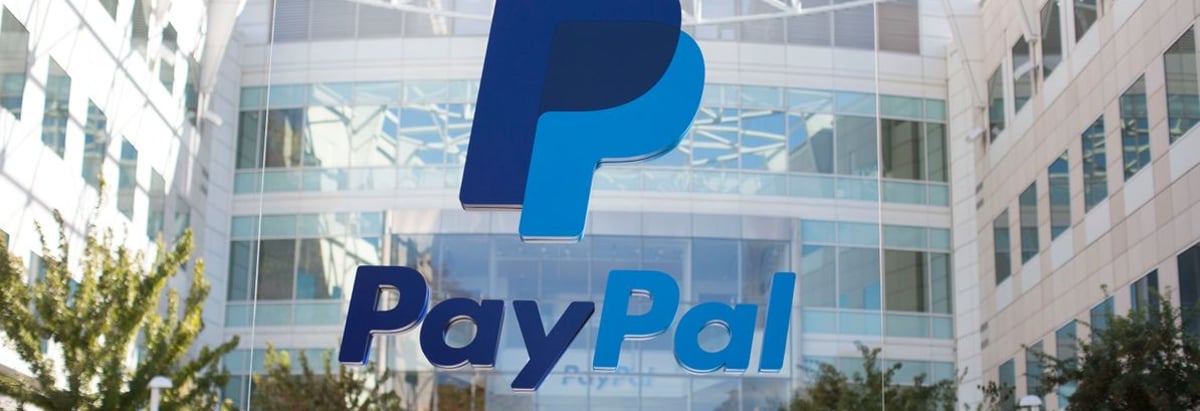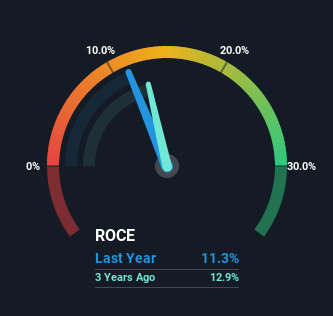- United States
- /
- Diversified Financial
- /
- NasdaqGS:PYPL
Returns On Capital At PayPal Holdings (NASDAQ:PYPL) Have Stalled

If you're looking for a multi-bagger, there's a few things to keep an eye out for. One common approach is to try and find a company with returns on capital employed (ROCE) that are increasing, in conjunction with a growing amount of capital employed. Ultimately, this demonstrates that it's a business that is reinvesting profits at increasing rates of return. With that in mind, the ROCE of PayPal Holdings (NASDAQ:PYPL) looks decent, right now, so lets see what the trend of returns can tell us.
Understanding Return On Capital Employed (ROCE)
For those who don't know, ROCE is a measure of a company's yearly pre-tax profit (its return), relative to the capital employed in the business. The formula for this calculation on PayPal Holdings is:
Return on Capital Employed = Earnings Before Interest and Tax (EBIT) ÷ (Total Assets - Current Liabilities)
0.11 = US$3.7b ÷ (US$78b - US$45b) (Based on the trailing twelve months to June 2022).
So, PayPal Holdings has an ROCE of 11%. In absolute terms, that's a pretty normal return, and it's somewhat close to the IT industry average of 13%.
Our analysis indicates that PYPL is potentially undervalued!

Above you can see how the current ROCE for PayPal Holdings compares to its prior returns on capital, but there's only so much you can tell from the past. If you'd like, you can check out the forecasts from the analysts covering PayPal Holdings here for free.
The Trend Of ROCE
While the current returns on capital are decent, they haven't changed much. The company has consistently earned 11% for the last five years, and the capital employed within the business has risen 96% in that time. 11% is a pretty standard return, and it provides some comfort knowing that PayPal Holdings has consistently earned this amount. Over long periods of time, returns like these might not be too exciting, but with consistency they can pay off in terms of share price returns.
Another thing to note, PayPal Holdings has a high ratio of current liabilities to total assets of 58%. This effectively means that suppliers (or short-term creditors) are funding a large portion of the business, so just be aware that this can introduce some elements of risk. Ideally we'd like to see this reduce as that would mean fewer obligations bearing risks.
The Bottom Line On PayPal Holdings' ROCE
In the end, PayPal Holdings has proven its ability to adequately reinvest capital at good rates of return. And given the stock has only risen 25% over the last five years, we'd suspect the market is beginning to recognize these trends. So to determine if PayPal Holdings is a multi-bagger going forward, we'd suggest digging deeper into the company's other fundamentals.
Like most companies, PayPal Holdings does come with some risks, and we've found 3 warning signs that you should be aware of.
While PayPal Holdings may not currently earn the highest returns, we've compiled a list of companies that currently earn more than 25% return on equity. Check out this free list here.
New: Manage All Your Stock Portfolios in One Place
We've created the ultimate portfolio companion for stock investors, and it's free.
• Connect an unlimited number of Portfolios and see your total in one currency
• Be alerted to new Warning Signs or Risks via email or mobile
• Track the Fair Value of your stocks
Have feedback on this article? Concerned about the content? Get in touch with us directly. Alternatively, email editorial-team (at) simplywallst.com.
This article by Simply Wall St is general in nature. We provide commentary based on historical data and analyst forecasts only using an unbiased methodology and our articles are not intended to be financial advice. It does not constitute a recommendation to buy or sell any stock, and does not take account of your objectives, or your financial situation. We aim to bring you long-term focused analysis driven by fundamental data. Note that our analysis may not factor in the latest price-sensitive company announcements or qualitative material. Simply Wall St has no position in any stocks mentioned.
About NasdaqGS:PYPL
PayPal Holdings
Operates a technology platform that enables digital payments for merchants and consumers worldwide.
Excellent balance sheet and good value.
Similar Companies
Market Insights
Community Narratives



